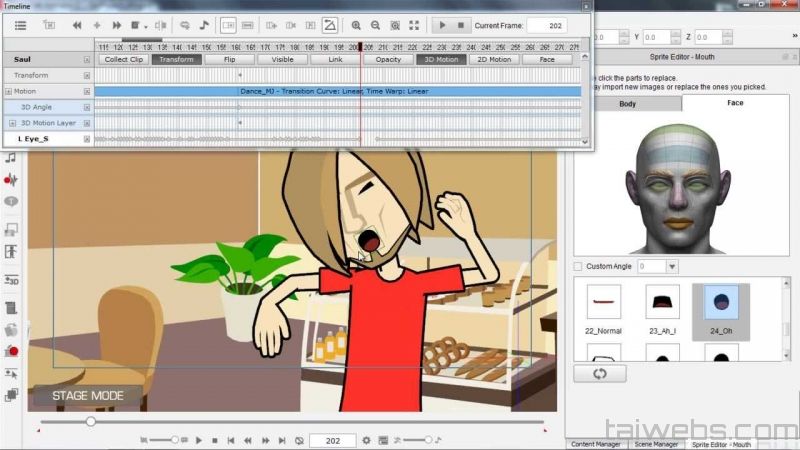
- Reallusion facial mocap cartoon animator 4 how to#
- Reallusion facial mocap cartoon animator 4 software#
- Reallusion facial mocap cartoon animator 4 plus#
- Reallusion facial mocap cartoon animator 4 free#
Reallusion facial mocap cartoon animator 4 free#
If getting you up to advanced level with Cartoon Animator as fast as possible wasn't enough, the course comes with a free Office scene project that is Render Styles compatible (you'll know what that means by part 3 of the course if you're completely new), and includes a G3-360 head, bone hands, Office woman character that you can use in your own personal or commercial projects. The included Office and Business Woman Project Scene It's how I can teach so much in such a short time. The order matters because later videos assume you've seen what has been shown before. (2 Videos).Īs you can see, even the course outline goes from easy to progressively harder concepts because so much thought has gone into the learning order.Īgain, I highly recommend you watch all the videos in order, at least once, even if you think you already know the earlier stuff (those sections are short, you'll power through them!).

Reallusion facial mocap cartoon animator 4 how to#
Then you'll learn how to export your work as a single frame, frame sequence, transparent video, or standard video ready to import into your preferred video editor.

(6 Videos).įinally you'll learn how to add sound effects and music, adjust their volume, and how to edit audio in the timeline. You'll also learn about character layers and where to find the key frames for those. You'll learn where both systems create key frames in the timeline and how you can apply transforms, deforms, and transition curves to facial animations. You'll learn how to animate G3 character faces using the Face Puppet Editor or the Face Key Editor. How to make your characters talk with auto lip syncing, and how to manually adjust the lip sync in the timeline. You'll also learn where motion files and the 2D Key Motion editor make key frames in the timeline and how you can apply transition curves to them. (3 Videos).Īll the types of Characters and how to animate G3 Characters using pre-animated motions, pre-animated root motions, and the 2D Key Motion editor, as well as how to modify, make, and save custom motions.
Reallusion facial mocap cartoon animator 4 plus#
How to animate the camera using the Timeline and Transition Curves (1 Video).Īll the types of Props and how to transform, deform, and animate them using Transitions, Transition Curves or Elastic Motions, plus where each system creates key frames in the timeline. Navigating the stage, Scenes, Converting Props, Saving Scenes and Projects (1 Video). There are six main video topics (with each topic section split into about ten minute bites so you're never too far from taking a break). The course is a structured walkthrough of all the essential features you need to know to make amazing animations.ĭesigned to teach you the easiest concepts first, gradually moving up to harder, more complex features, that you will not be intimidated by, if you follow through all the videos in order. Suited to complete beginners or even if you've already been learning Cartoon Animator for a while.įollow along but there are no step by step projects to complete.

With just over three and a half hours of video tutorials The Lazy Animator Beginner's Guide to Cartoon Animator is a crash course in all the main features you need to know in order to make 2D animated cartoons with Cartoon Animator.

I just wanted to learn Cartoon Animator as quickly as possible so I could spend more time creating my own animations without getting stuck on things I had yet to learn.
Reallusion facial mocap cartoon animator 4 software#
The Lazy Animator, Beginner's Guide to Cartoon Animator is the kind of course I wish was available when I was learning the software back in 2012.


 0 kommentar(er)
0 kommentar(er)
